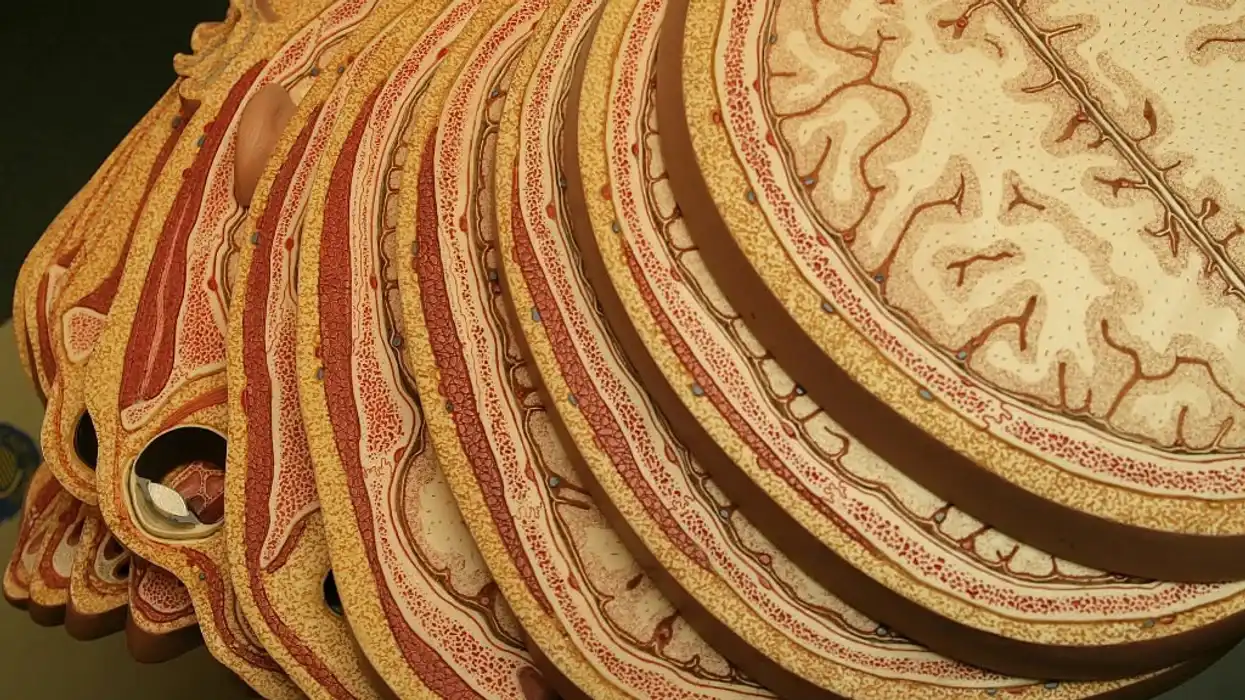
Photo by Rick Friedman/Corbis via Getty Images

Radical feminist theorists such as Judith Butler and various exponents of trangenderism have suggested that sex — or at the very least gender, assuming there is a difference — is socially constructed.
A group of Stanford Medicine researchers rained on the gender ideologues' parade this week with a new study indicating that no amount of social construction or cosmetic surgery can hide the fact of one's actual sex on a brain scan.
The study, published Monday in the Proceedings of the National Academy of Science, identified "highly replicable, generalizable, and behaviorally relevant sex differences in human functional brain organization localized to the default mode network, striatum, and limbic network."
Simply put: men's and women's brains not only are physically distinct, but they operate differently.
Differences between the sexes in behavior, performance, and physiology have been observed and understood since time immemorial. While various studies have substantiated this common sense in esteemed academic journals — highlighting in 2017, for instance, the volumetric and structural differences between male and female brains — the Stanford scientists suggested that previous scientific work demonstrating differences in brain organization between the sexes remained inconclusive.
Accordingly, they set out to "uncover latent functional brain dynamics that distinguish male and female brains."
Lead authors Srikanth Ryali and Yuan Zhang, along with senior author Vinod Menon, director of the Stanford Cognitive and Systems Neuroscience Laboratory, fed a new artificial intelligence model various brain scans, telling it whether it was digesting images of male or female brains. Over time it began to "notice" subtle patterns that could help it differentiate between the two types.
The researchers then tested their spatiotemporal deep neural network model on the brain scans of 1,500 young adults, ages 20 to 35. The AI model proved incredibly effective at determining whether the scans came from men or women, getting it right over 90% of the time.
"Our results demonstrate that sex differences in functional brain dynamics are not only highly replicable and generalizable but also behaviorally relevant, challenging the notion of a continuum in male-female brain organization," said the study.
"This is a very strong piece of evidence that sex is a robust determinant of human brain organization," Menon said in a release.
The researchers also created sex-specific models of cognitive abilities. According to Stanford Medicine, one AI model was able to predict cognitive performance in men but not in women. The other model was effective in predicting cognitive performance but with the sexes reversed.
"These models worked really well because we successfully separated brain patterns between sexes," Menon noted. "That tells me that overlooking sex differences in brain organization could lead us to miss key factors underlying neuropsychiatric disorders."
The "hot spots" that were most helpful in distinguishing between male and female brains were the so-called default mode network, the corpus striatum, and the limbic system.
The Telegraph noted that the "default mode network" is the area of the brain believed to be the neurological seat for the "self," critical for contemplative thought, daydreaming, and processing autobiographic memories.
The striatum is a cluster of neurons in the forebrain that plays a general role in skill learning, apparently optimizing behavior by "refining action selection and in shaping habits and skills as a modulator of motor repertoires."
The limbic system is a group of structures deep inside the brain that performs various functions — from governing emotions, motivation, smell, and behavior to playing a role in the formation of long-term memory and dealing with sexual stimulation. It's also reportedly important in habit forming and rewards.
"A key motivation for this study is that sex plays a crucial role in human brain development, in aging, and in the manifestation of psychiatric and neurological disorders," continued Menon. "Identifying consistent and replicable sex differences in the healthy adult brain is a critical step toward a deeper understanding of sex-specific vulnerabilities in psychiatric and neurological disorders."
Gina Rippon, a leftist professor emeritus of cognitive neuroimaging at the Aston Brain Center, scrambled to account for the study's conclusions, claiming that society is to blame for the physical neurological differences between men and women, reported the Telegraph.
"The really intriguing issue is that those areas of the brain which are most reliably distinguishing the sexes are key parts of the social brain," said Rippon. "The key issue is whether these differences are a product of sex-specific, biological influences or of brain-changing gendered experiences. Or both. Are we really looking at sex differences? Or gender differences?"
Rippon has spent many years downplaying the role of biology in creating sex differences in the brain, going so far as to pen a controversial book in 2019 called "Gendered Brain: The New Neuroscience that Shatters the Myth of the Female Brain."
Like Blaze News? Bypass the censors, sign up for our newsletters, and get stories like this direct to your inbox. Sign up here!